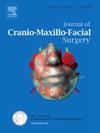Arthrocentesis versus conservative treatments for temporomandibular joint disorders: A systematic review with meta-analyses and trial sequential analyses
IF 2.1
2区 医学
Q2 DENTISTRY, ORAL SURGERY & MEDICINE
引用次数: 0
Abstract
This systematic review aimed to evaluate the efficacy of arthrocentesis compared to conservative treatments for symptomatic temporomandibular joint disorders. A systematic search for randomized, prospective and retrospective controlled trials was undertaken in five electronic databases. Various patient outcomes and economic evaluations were analysed for short-term (<6 months), intermediate-term (6 months to 5 years) and long-term (≥5 years) follow-up periods. Primary meta-analyses were performed for randomized controlled trials using random-effects models. Arthrocentesis was superior to conservative treatments regarding pain reduction at short-term (MD 14.5 (95% CI 9.7; 19.4), k= 9 RCTs, n= 545 patients, I2= 48%, high quality of evidence) and intermediate-term follow-up (MD 14.2 (95% CI 7.3; 21.1), k=9 RCTs, n= 547 patients, I2= 81%, moderate quality of evidence). Furthermore, arthrocentesis was superior to conservative treatment regarding maximum mouth opening improvement at short-term (MD 2.4 mm (95% CI 0.8; 4.1), k= 8 RCTs, n= 472 patients, I2= 80%, moderate quality of evidence) and intermediate-term follow-up (MD 2.2 mm (95% CI 0.5; 3.9), k= 8 RCTs, n= 468 patients, I2= 75%, moderate quality of evidence). Trial sequential analysis supported the conclusions of all primary meta-analyses. Results were clinically relevant for pain improvement, but not for maximum mouth opening improvement. Results at long-term follow-up and for other study outcomes were either lacking or too heterogenous for meta-analysis, highlighting the need for more standardized, high-quality research.
关节穿刺与保守治疗颞下颌关节疾病:荟萃分析和试验序列分析的系统综述。
本系统综述旨在评价关节穿刺与保守治疗对症状性颞下颌关节疾病的疗效。在五个电子数据库中进行了随机、前瞻性和回顾性对照试验的系统搜索。对短期(2= 48%,高质量证据)和中期随访(MD 14.2 (95% CI 7.3;21.1), k=9 RCTs, n= 547例患者,I2= 81%,证据质量中等)。此外,在短期内最大开口改善方面,关节穿刺优于保守治疗(MD 2.4 mm (95% CI 0.8;4.1), k= 8 RCTs, n= 472例患者,I2= 80%,证据质量中等)和中期随访(MD 2.2 mm (95% CI 0.5;3.9), k= 8 RCTs, n= 468例患者,I2= 75%,证据质量中等)。试验序贯分析支持所有主要荟萃分析的结论。结果与疼痛改善有临床相关性,但与最大开口改善无临床相关性。长期随访结果和其他研究结果要么缺乏,要么过于异质性,无法进行荟萃分析,这凸显了对更多标准化、高质量研究的需求。
本文章由计算机程序翻译,如有差异,请以英文原文为准。
求助全文
约1分钟内获得全文
求助全文
来源期刊
CiteScore
5.20
自引率
22.60%
发文量
117
审稿时长
70 days
期刊介绍:
The Journal of Cranio-Maxillofacial Surgery publishes articles covering all aspects of surgery of the head, face and jaw. Specific topics covered recently have included:
• Distraction osteogenesis
• Synthetic bone substitutes
• Fibroblast growth factors
• Fetal wound healing
• Skull base surgery
• Computer-assisted surgery
• Vascularized bone grafts

 求助内容:
求助内容: 应助结果提醒方式:
应助结果提醒方式:


